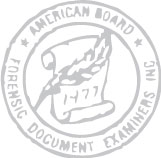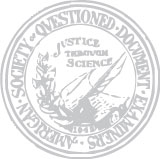Examining Authenticity
Evidence may not be visible to the naked eye
Document Examinations
Prove, beyond a doubt, the issue at hand.
Document examination encompasses all aspects of a document that is in dispute, which includes: the identification or elimination of writing and/or printing with a known individual’s writing; detecting forgeries, alterations, obliterations, additions or insertions, deletions, or other changes to documents; restoring burned, faded, or water soaked documents; the identification, elimination, or classification of typewriting, typewriters and elements, ribbons and correction materials; paper and ink analysis; dating of documents; searching documents for impressed writing, typing, or other identifying impressions; photocopier identification, classification, or comparison; rubber stamps or their impressions; anything to do with the production of documents or their authenticity.
Forensic document examiners conduct examinations on a wide variety of evidence. This can range from examining medical records to determine whether the entries were made at the time alleged, examining anonymous letters being sent by one employee to another, determining whether the signature on the will is the decedent’s, deciphering an entry that has been covered with white-out, determining whether a particular photocopy was produced on a suspected machine, and so on.
It is highly recommended that if you have a case involving document evidence that you preserve the evidence and consult with a qualified forensic document examiner immediately. Evidence that may not be visible to the naked eye can be destroyed by handling.


